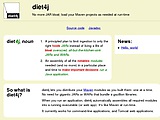 Enhance your online store's digital presence with the powerful PrestaShop SEO Module. It plays a pivotal role in boosting website visibility and improving search engine rankings. This module enables you to fine-tune critical SEO elements, including product pages, meta tags, and sitemaps, ultimately driving organic traffic, attracting a larger audience, and strengthening your online presence.
Enhance your online store's digital presence with the powerful PrestaShop SEO Module. It plays a pivotal role in boosting website visibility and improving search engine rankings. This module enables you to fine-tune critical SEO elements, including product pages, meta tags, and sitemaps, ultimately driving organic traffic, attracting a larger audience, and strengthening your online presence.
 libxmp is the backend library for XMP which provides playback of MOD audio files. Over 90 formats are supported, PC as well as ancient home computer variants, including standard MOD files, S3M, XM, and IT files.
libxmp is the backend library for XMP which provides playback of MOD audio files. Over 90 formats are supported, PC as well as ancient home computer variants, including standard MOD files, S3M, XM, and IT files.
 Prestashop Registration Fields Module allows you to add fields like customer address on the registration form. Admin can also validate new registrations from the backend. There are more options to add text, dropdown, upload, image, checkbox & 8 other field types and make them dependable. It also has an option to restrict new registrations with validation from Admin and filter customers by custom fields (Text, date field only)
Prestashop Registration Fields Module allows you to add fields like customer address on the registration form. Admin can also validate new registrations from the backend. There are more options to add text, dropdown, upload, image, checkbox & 8 other field types and make them dependable. It also has an option to restrict new registrations with validation from Admin and filter customers by custom fields (Text, date field only)
 A new npm module that makes nodejs development easy and clean. The simple way to launch a quick web server and spring straight into working
A new npm module that makes nodejs development easy and clean. The simple way to launch a quick web server and spring straight into working
 With the help of Advanced Professional Blog, You can share blog to your store and share latest news, events, and articles. You can also use SEO features to add Meta title, keywords & description of every blog page. You can enable Facebook comments and auto spam checker. Add captcha to prevent bot comments. This blog module is also 100% mobile friendly. There is also an option to show your latest Twitter and Facebook feeds/posts on the blog. There is also an option to show Third Party RSS feeds.
With the help of Advanced Professional Blog, You can share blog to your store and share latest news, events, and articles. You can also use SEO features to add Meta title, keywords & description of every blog page. You can enable Facebook comments and auto spam checker. Add captcha to prevent bot comments. This blog module is also 100% mobile friendly. There is also an option to show your latest Twitter and Facebook feeds/posts on the blog. There is also an option to show Third Party RSS feeds.
 ErmineSI is a platform that allows custom syscall handling. No need to kernel module, everything done in user space.
ErmineSI is a platform that allows custom syscall handling. No need to kernel module, everything done in user space.
 Maven is great for breaking gigantic Java code bases into many little modules, with identified dependencies. This allows incremental builds etc. And then, to run that code, we usually put all together again into a uber-mega-JAR or WAR, or with mile-long class paths. While sometimes this makes sense, often it does not. diet4j can run command-line apps, and Tomcat web apps, similarly to how maven builds projects: simply specify the name of the top project, and diet4j assembles all the other JAR
Maven is great for breaking gigantic Java code bases into many little modules, with identified dependencies. This allows incremental builds etc. And then, to run that code, we usually put all together again into a uber-mega-JAR or WAR, or with mile-long class paths. While sometimes this makes sense, often it does not. diet4j can run command-line apps, and Tomcat web apps, similarly to how maven builds projects: simply specify the name of the top project, and diet4j assembles all the other JAR
|